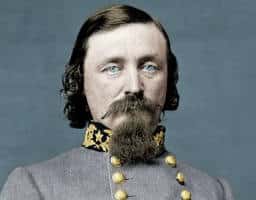Early in the morning on Gettysburg day 3, July 3rd, 1863, Union batteries from the XII Corp opened up on Confederate positions on lower Culp’s Hill. General Johnson was ordered to attack the Union positions at the top of Culp’s Hill, which had been reinforced overnight by units from the I and VI Corps and was significantly stronger from the day before.
Watch:
Pickett’s Charge, one of the most futile and bloodiest assaults of the Civil War, left a three-quarter-mile trail of casualties across the open fields before the aptly named Cemetery Ridge.
Despite having made significant inroads during sharp engagements on July 2, the Confederate army had failed to dislodge the main Union line occupying the high ground south of Gettysburg. Initially, Lee planned to renew the previous day’s offensive with a second round of attacks on the federal flanks. Around dawn, however, Union artillery on Culp’s Hill began an intense bombardment aimed at retaking a portion of the defensive works on the lower slopes that had been lost in the previous night’s fighting. The Confederates attacked, but despite seven hours of fierce fighting, the Union line held firm.

So, why did Robert E. Lee order Pickett’s Charge? Watch:
When the Battle of Gettysburg ended, as many as 51,000 soldiers were killed, wounded, captured or missing. As Lee led his army on a torturous retreat back to Virginia, an extensive network of hospitals emerged to treat the injured, while local residents began the hard work of dealing with the dead and returning to normalcy. Four months after the battle, President Lincoln used the dedication ceremony for Gettysburg’s Soldiers’ National Cemetery to honor the fallen Union soldiers and redefine the purpose of the war in his historic Gettysburg Address.
Every so often, even recently, a body or an artifact rises to the surface in those blood-drenched orchards.
This war was fought for states’ rights and to free the slaves. Thank Abraham Lincoln.
Learn More: Preservation of the Third Day’s Battlefield » | July 1, 1862 » | July 2, 1863 »
Was not fought “to free the slaves” nor to retain slavery.